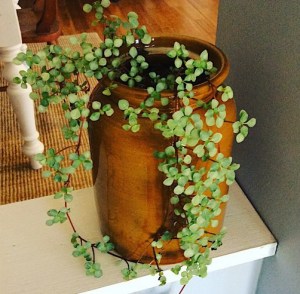 We love homes that are full of plants. They always make a home feel fresh and beautiful. Use Instagram or Pintrest to inspire you with your favourite images. With easier access to a wider variety of plants, collecting and styling them can be great fun. As we increasingly dwell indoors, due to busy lifestyles and smaller backyards we instinctively seek ways to create healthier living environments. Plants can be wonderful mood lifters and their air clarifying skills help to improve our quality of living. What’s not to love?
We love homes that are full of plants. They always make a home feel fresh and beautiful. Use Instagram or Pintrest to inspire you with your favourite images. With easier access to a wider variety of plants, collecting and styling them can be great fun. As we increasingly dwell indoors, due to busy lifestyles and smaller backyards we instinctively seek ways to create healthier living environments. Plants can be wonderful mood lifters and their air clarifying skills help to improve our quality of living. What’s not to love?
We know that not everyone feels like they have a green thumb. This is the first blog in a little series we will dedicate to indoor plants and their care. What we need to remember first and foremost is that plants are living things. They require practical love. Combine this with a little bit of knowledge and observation to keep them healthy. Please keep in mind that we are florists and not horticulturalists/botanists so take our advice as a starting point only and seek further advice if any of your plants are struggling. We will focus on 4 main care areas to consider and we hope that a lifetime of plant joy awaits you!
Light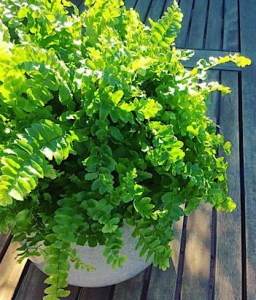
Like us, plants need energy to grow and they create this energy through photosynthesis. For this they require light. Not all plants require the same amount of light and not all light is the same. Where possible natural light is best, environmentally and on your wallet. Thinking about where to place your plant within your home is vital. If your home is particularly dark you may purchase grow lights to light specific plant areas. Very generally speaking the darker the leaf the less light is required for health. This does not mean no light. In my experience many of the plants that others have said require little light, required more than I was thinking. They survived darker conditions but they did not grow much.
If your plant has variegated foliage then it will usually require a little more light to maintain the variegation. This does not mean that they like to be placed in full sun! Remember that it takes time for a plant to adjust to new living conditions and any extreme variations will cause it stress. Roughly once a month we like to take our indoor plants outside for a few days in an under cover area that receives dappled light just to give them a little holiday (does depend on the size they can get heavy!). Again you need to keep an eye on them as they will not be adapted for sudden extreme changes in environment.
When you place a new plant take a moment to read any care information that comes with it and keep a close eye on it for the first month to see if it stays healthy in it’s new location. If it shows much sign of stress then re-think its placement.
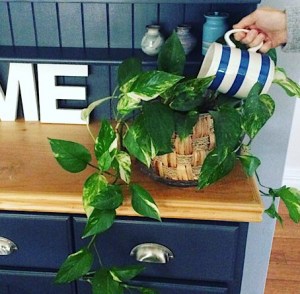 Water
Water
Water plays a vital role your plants life. Surprisingly more indoor plants die from too much water rather than not enough so it is important to learn a little bit about your plant before watering. Spathiphyllum or Peace Lily plants are a great indoor variety and they like their soil to be kept moist but not soggy. Succulents and cacti require much less water but it will vary depending on the variety, how much light they receive and how hot the air temperature is.
If your plant receives too much water the roots will not be able to breathe and the plant may begin to wilt, the lower leaves may yellow, the roots may rot and there will be no new growth. This in my experience is harder to fix than under watering provided the plant is still alive of course! If you are under watering then the leaves may yellow and dry up but with a little water and perhaps some thoughtful pruning your plant may survive the ordeal.
Collecting rainwater to water them with or taking plants out into the rain every so often also seems to give them a boost. Check that your planters have proper drainage, so that the water can drain through, and that you have waterproof catchers underneath them to protect your floors. If not you will need to be very careful with your watering.
Food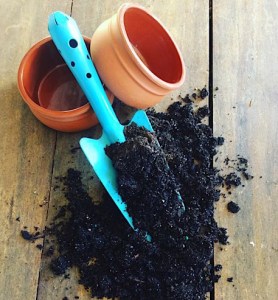
Plants create energy from photosynthesis but they still require nutrients (food) from the soil or growing mediums to thrive. Without going into all the detail they require nutrients such as nitrogen, phosphorus, potassium, magnesium, sulphur and calcium (there are more but these are the main ones) for optimum cell production. If a plant has been potted in the same soil for a long time it will eventually use up the existing soil nutrients and you will need to think about adding some more. I recommend going to your local plant nursery and asking them what fertilisers they use. Be sure to follow the instructions as too much of these things can also be detrimental to your plant.
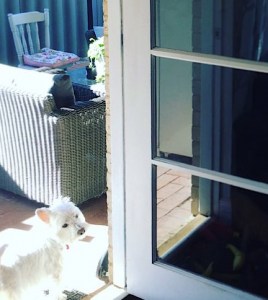 Air
Air
Plants require air to survive! They use Carbon Dioxide during photosynthesis but the roots also require oxygen to stay healthy. For your indoor plants to thrive make sure you keep some windows open during the day (when you are home) to allow air to circulate (it’s better for you too!). Plants need dusting too! Keep the leaves free from dirt and dust so that they can breathe easy.
For plant roots to get the oxygen they need make sure the soil is not waterlogged and ensure that the soil does not become compacted over time. As the plant grows you may need to re-pot it not only for root growth room but so that the soil stays free enough for oxygen to get to the roots. Of course water plants are excluded from the waterlogged rule as they have adapted to roots in water.
Although brief we hope this gives you a starting point in your indoor plant care. It may feel a little overwhelming if you are new to gardening but remember that plants are living beings just like you (well similar anyway…). If you think about the conditions you best survive under then remember it is not so different for your plants they will at least have a fighting chance.
Keep in mind that plants have adapted to particular environments and if you know where they naturally grow and where they have been brought up you will do better by them. Some plants adapt better than others and you can learn a lot just from observing your plant on a daily-weekly basis.
For me the observation is a large part of the joy of gardening (indoor or out). I really love taking note of all the changes, perhaps seeing a new leaf form or some flower buds bloom, even noticing that one is not doing well and figuring out how to change this is a wonderful feeling.
In our next blog we will focus on varieties of plants that we have found do well indoors and how to style them! In the meantime we wish you and your plants all the best of health! We are currently updating the potted plant section of our website so keep an eye out over the next month as we hope to give you more wonderful plant gift options.


